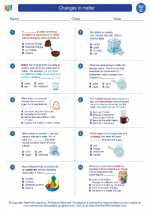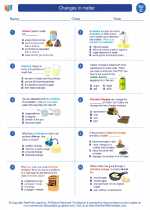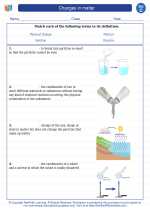Mineral: Explanation and Study Guide
What is a Mineral?
A mineral is a naturally occurring inorganic solid with a specific chemical composition and a crystalline structure. Minerals are the building blocks of rocks and are found in the Earth's crust. They have a wide range of physical and chemical properties, including color, hardness, luster, and cleavage.
Characteristics of Minerals
Minerals have several key characteristics:
- Inorganic: Minerals are not formed by living organisms and are not composed of organic materials.
- Solid: Minerals have a definite shape and volume at room temperature.
- Specific Chemical Composition: Each mineral has a unique chemical formula, such as quartz (SiO2) and calcite (CaCO3).
- Crystalline Structure: Minerals have a regular, repeating arrangement of atoms in a crystalline lattice.
Identifying Minerals
Minerals can be identified and distinguished from each other based on their physical and chemical properties. Some common properties used for identification include:
- Color: The visible appearance of a mineral.
- Hardness: The resistance of a mineral to scratching, measured on the Mohs scale.
- Luster: The way light interacts with the surface of a mineral, such as metallic, vitreous, or dull.
- Cleavage and Fracture: The way a mineral breaks along certain planes or irregularly.
- Streak: The color of a mineral's powdered form.
Uses of Minerals
Minerals have diverse uses in everyday life and industry. They are used in construction materials, jewelry, electronics, and manufacturing processes. For example, quartz is used in glassmaking, talc is used in cosmetics, and copper is used in electrical wiring.
Study Guide
Key Concepts
- What are the key characteristics of minerals?
- How are minerals identified based on their physical properties?
- What are some common uses of minerals?
Review Questions
- What is the difference between a mineral and a rock?
- How does the Mohs scale help in identifying minerals?
- Give examples of minerals and their uses in everyday life.
Studying minerals is an exciting journey into the earth's composition and the materials that shape our world. Understanding these fundamental building blocks provides insight into geological processes and the practical applications of minerals in our daily lives.
[Mineral] Related Worksheets and Study Guides:
.◂Science Worksheets and Study Guides Third Grade. Changes in matter

 Worksheet/Answer key
Worksheet/Answer key
 Worksheet/Answer key
Worksheet/Answer key
 Worksheet/Answer key
Worksheet/Answer key
 Vocabulary/Answer key
Vocabulary/Answer key
